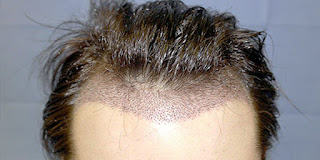The choice of the best treatment for hair transplant depends on individual factors, including the extent of hair loss, donor hair availability, personal preferences, and the guidance of a qualified hair transplant surgeon in Pakistan. Two common methods for hair transplantation are Follicular Unit Transplantation (FUT) and Follicular Unit Extraction (FUE). Here's an overview of both methods:
Follicular Unit Transplantation (FUT):
· FUT, also known as the strip method, involves surgically removing a strip of skin from the back or side of the head (the donor area), where hair is abundant.
· The strip is dissected into individual follicular units under a microscope.
· The follicular units are then transplanted into the recipient area, where hair is thinning or balding.
· FUT can yield many grafts in a single session, making it suitable for individuals with extensive hair loss.
· It leaves a linear scar at the donor site, which can be hidden with longer hair.
Follicular Unit Extraction (FUE):
· FUE is a minimally invasive technique that involves the extraction of individual hair follicles directly from the donor area using a small punch tool or a robotic device.
· The extracted follicles are then transplanted into the recipient area, like FUT.
· FUE doesn't leave a linear scar but instead leaves tiny, dot-like scars that are less noticeable, especially with short haircuts.
· It is suitable for individuals who prefer not to have a visible linear scar or have limited donor hair available.
The choice between FUT and FUE depends on your specific circumstances and goals. Here are some factors to consider when making this decision:
Donor Hair Availability: If you have a limited donor hair supply, FUE restoration in Peshawar might be a better choice, as it allows you to use hair from a broader area of the scalp.
Scarring Concerns: If you are concerned about scarring, FUE is less likely to leave visible scars in the donor area.
Recovery Time: FUE typically involves a quicker recovery time and less discomfort than FUT.
Graft Quantity: FUT can yield a higher number of grafts in a single session, making it suitable for extensive hair loss cases.
Personal Preferences: Your own preferences and comfort with different procedures should also play a role in your decision.
Ultimately, it is crucial to consult with a board-certified hair transplant surgeon. They can assess your specific condition, discuss your goals, and recommend the most suitable method for your individual case. Additionally, advancements in hair transplantation techniques continue to evolve, so it's important to stay informed about the latest developments in the field when considering a hair transplant.

